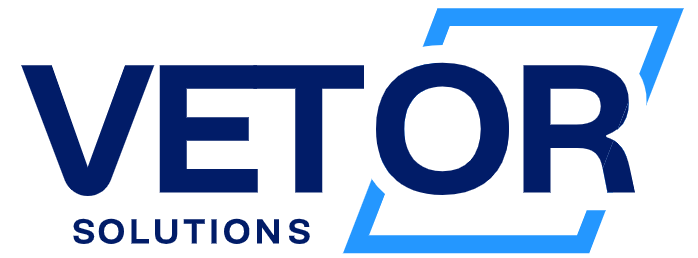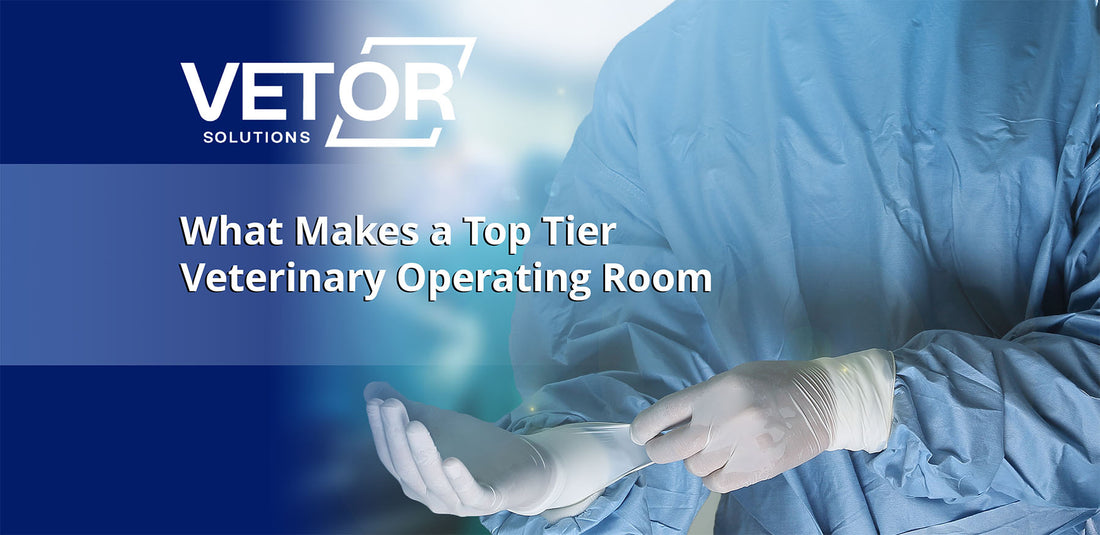After more than 40 years as an Anesthesiologist in the Operating Rooms, I know ORs. A great veterinary OR is more than just tools and space. It’s a blend of design, equipment, people, and protocol that together ensures safety, efficiency, and excellent patient outcomes. Here are the essential components.
1. Physical Design & Environment
a. Room Layout and Zoning
- The OR should be a distinct area separate from treatment, exam, and prep areas. There should be designated zones such as preop prep, sterile scrub, surgical suite and postop recovery. This designation reduces cross‑contamination and improves efficiency.
- Ample storage in immediate proximity for sterile and non‑sterile supplies. Don’t store large equipment in corridors or the OR itself.
b. Surfaces and Materials
- Floors, walls, countertops must be made of non‑porous, impervious, chemical resistant, easy to clean materials. All surfaces should be seamless or with sealed joints to prevent harboring of fomites.
- Non‑slip flooring is important for staff safety on potentially wet floors.
c. Lighting, Airflow, Ventilation & HVAC
- Bright, adjustable lighting is critical. Overhead surgical lights (or LED lights) must have the capability of being positioned to avoid shadows and give adequate illumination over the entire surgical field. Backup lighting is imperative in case of power failure.
- Air‐exchange in the OR is crucial. Veterinary surgery rooms aim for 12‑14 air changes per hour and for some specialty surgeries the air exchange may need to be up to 15‑20 air exchanges per hour.
- Proper temperature control is also needed. There is a fine balance between maintaining an adequate temperature for the well-being of the patient and the comfort of OR personnel.
- Ventilation systems must maintain cleanliness, minimize airborne contamination, and control pressure differences between sterile and non‑sterile zones.
d. Ergonomics and Workflow
- The operating table should be adjustable in height and position to allow surgeons and assistants to work comfortably and have ready access to key equipment. The anesthesia machine and patient monitors must be attended to by dedicated personnel trained in their use.
- Designated work zoning is imperative so that instruments, supplies, trash, and clean/dirty work are in their own areas to avoid cross traffic.
2. Sterility, Hygiene & Infection Control
- A strict protocol is necessary for sterilization of instruments in autoclaves and ultrasonic cleaners as well as storage of sterile instrument packs.
- There must be a clean storage room for clean supplies which is separate from soiled workrooms where contamination may occur.
- OR staff attire must wear surgical gowns, caps, masks and gloves each time they are doing a case in the OR. No exceptions.
- Scrub sinks should hands‑free or elbow/knee operated faucets.
- There must be appropriate waste handling including biohazard materials and sharp objects like used scalpel blades.
A regular written cleaning schedule is a necessity for OR surfaces and monitoring of sterilization procedures and sterilization equipment.
3. Essential Equipment & Instrumentation
Here are the must‑have items and equipment in a well‑equipped veterinary OR.
|
Function |
Essential Equipment |
Purpose / Additional Considerations |
|
Anesthesia & Respiratory Support |
Anesthesia machine, vaporizer(s), endotracheal tubes; patient warming units; oxygen supply; ventilator in more complex/severe cases.
|
Monitoring of anesthesia depth, safety during long or thoracic surgeries. |
|
Monitoring |
Multi‑parameter monitor: ECG, SpO₂ (pulse oximeter), respiration rate, capnography (ETCO₂), temperature, blood pressure.
|
Real‑time feedback critical for patient safety. |
|
Surgical Tables & Lighting |
Adjustable operating table; bright surgical lights (shadow minimizing); flexible positioning of lights; backup lighting. |
Good lighting improves visibility, reduces errors; table adjusts for different species/sizes. |
|
Fluoroscopy / Imaging Adjuncts |
C‑arm fluoroscopy; X‑ray viewer / digital imaging capability. |
Helpful for orthopedics, implant placement, locating foreign bodies. |
|
Suction, Fluid & IV Support |
Suction machine; IV fluid pumps; syringe pumps; fluid warming. |
Keeps operative field clear; essential for resuscitation, maintaining hydration, and delivering medications.
|
|
Sterilization Equipment |
Autoclave(s); ultrasonic cleaner or washer/disinfector; instrument trays and sterilization pouches; clean storage.
|
To prevent surgical site infections and maintain instrument integrity.
|
|
Support Equipment |
Recovery cages or ICU area; heating pads; patient warming devices; monitoring in recovery; oxygen supply; patient positioning equipment. |
Post‑operative care is crucial; some patients may need ventilatory support, warming, etc. |
HoverHeat Patient Warming
4. Utilities, Power & Backup
- Every OR must have a reliable power supply with a backup generator or uninterruptible power supply (UPS) for critical equipment, lighting, anesthesia equipment, monitors etc.
- There must be adequate electrical outlets, including outlets for high electrical drawing devices. Ideally some outlets should be near the ceiling or in overhead booms to avoid cords across the floor.
- A clean water supply of hot and cold running water is essential for scrub sinks, patient prepping and instrument cleaning.
- Waste disposal systems are essential for disposal of sharps, hazardous waste and biohazardous waste.
5. Staffing & Training
- It is a given that veterinary surgeons, anesthesia personnel, surgical nurses/technicians and scrub nurses have clearly defined roles to maintain clinical efficiency
- Regular training is essential in sterile technique, emergency protocols and equipment usage.
- Adequate staffing levels are necessary so that each person in the OR can dedicate themselves to the role assigned to them. Someone dedicated to monitoring anesthesia should not be doing other chores. Patient safety depends on each person being dedicated to their role in the OR.
6. Workflow, Checklists & Protocols
- Pre‑surgical checklists are necessary to verify patient identity, procedure to be done, allergies, correct surgical site, prepping, etc.
- Instrument checklists and counts are imperative before and after the procedure to ensure nothing is left inside the patient or unaccounted for.
- Standard operating procedures (SOPs) are necessary for cleaning the OR and turn‑around between surgeries, sterilization, handling soiled and sterile instruments, and maintenance of equipment.
- Monitoring of environmental parameters is essential for adjustment of humidity, air exchange, and OR temperature.
7. Safety & Regulatory Compliance
- There must be compliance with local, state, and national veterinary medical board rules, and health & safety codes. For example, the Ohio Administrative Code requires ORs to have an impervious, cleanable surgery table, adequate surgical lighting (ceiling or free‑standing), backup lighting, impervious walls/floors/counters, and an illuminated viewer for radiographs.
- Standards such as those laid out by AAHA (American Animal Hospital Association) and comparable bodies regarding surgical facility design and equipment must be adhered to in the design and operation of each OR
8. Comfort & Ancillary Considerations
- Temperature control (heating/cooling) is not just for the patient but for staff comfort.
- Noise control, especially in preop prep and recovery areas, so that closer attention can be given to patient care.
- Good lighting in preop prep and recovery areas are essential for fastidious patient care.
- Good design and layout of a facility is essential to minimize staff fatigue and to decrease the number of staff necessary to operate a facility. Additionally, there must be adequate space to move around in the OR, pass instruments, and for staff to stand comfortably.
- The recovery area should be close to the OR to reduce transport time. The recovery area should be quiet, warm, and monitored for ultimate patient care.
Common Mistakes to Avoid
- Inadequate space or poorly arranged OR layout must be avoided. Crowded and cluttered ORs lead to clinical inefficiency.
- Insufficient or poorly maintained monitoring equipment is a harbinger of poor patient care.
- Poor sterilization practices such as using inadequate sterilizers, overloading autoclaves, and lack of sterility validation are a cause of many postoperative infections.
- Compromised lighting that creates shadows and insufficient illumination decrease the efficiency of surgical procedures.
- Inadequate training or staff trying to cover multiple roles simultaneously is a certainty for patient compromise. Operating on the patient while monitoring anesthesia depth and patient vital signs is a calamity waiting to happen.
- Weak infection control such as poor separation of sterile and non‑sterile zones as well as poor cleaning of surfaces is a cause of multiple postoperative infections.
Putting It All Together: Why It Matters
- Patient safety: Proper surgical and anesthesia equipment, patient monitors, and sterile processing equipment reduce the risk of surgical site infections, anesthesia‑related complications, and intraoperative complications.
- Efficiency & flow: Well-designed spaces reduce delay, decrease staff workload, reduce risk of contamination, and reduce OR turn overs between cases .
- Staff safety & comfort: Well-designed ORs prevent staff fatigue, ergonomic injuries, and exposure to hazards.
- Regulatory & professional standards compliance: Adherence to standards avoid the risk of fines, loss of license, and reputational damage.
- Better outcomes & reputation: Clinics with good OR facilities attract more complex cases, build trust with clients and grow practices.
Sample Checklist
Here is a condensed checklist that a veterinary clinic can use to audit or build their OR:
- OR separated from clinic traffic; clear zoning (preop prep / surgery / recovery)
- Impervious, clean‑able floors, walls, ceilings; sealed joints; non‑slip flooring
- Bright surgical lighting and backup lighting
- Adjustable OR table with positioning and restraint options
- Anesthesia machine with vaporizer, gas supply and oxygen supply
- Monitoring equipment: ECG, SpO₂, ETCO₂, BP, temperature
- Instrumentation: basic surgical set and specialty instruments as needed
- Sterilization equipment (autoclave, washer / ultrasonic cleaner); clean and dirty storage areas separate
- Suction, fluid pumps, IV support, recovery area with warming devices
- Adequate power outlets and backup power.
- Clean water supply and scrub sink with hands free faucets
- Staff trained appropriately and roles defined
- Safety protocols in place
- Compliance with local/state regulations (lighting, ventilation, sterilization, safety)
Ultimately, patient care is important. A well-designed OR with the right equipment, well-trained people, and the appropriate protocols ensures patient safety, clinical efficiency, and excellent patient outcomes.










